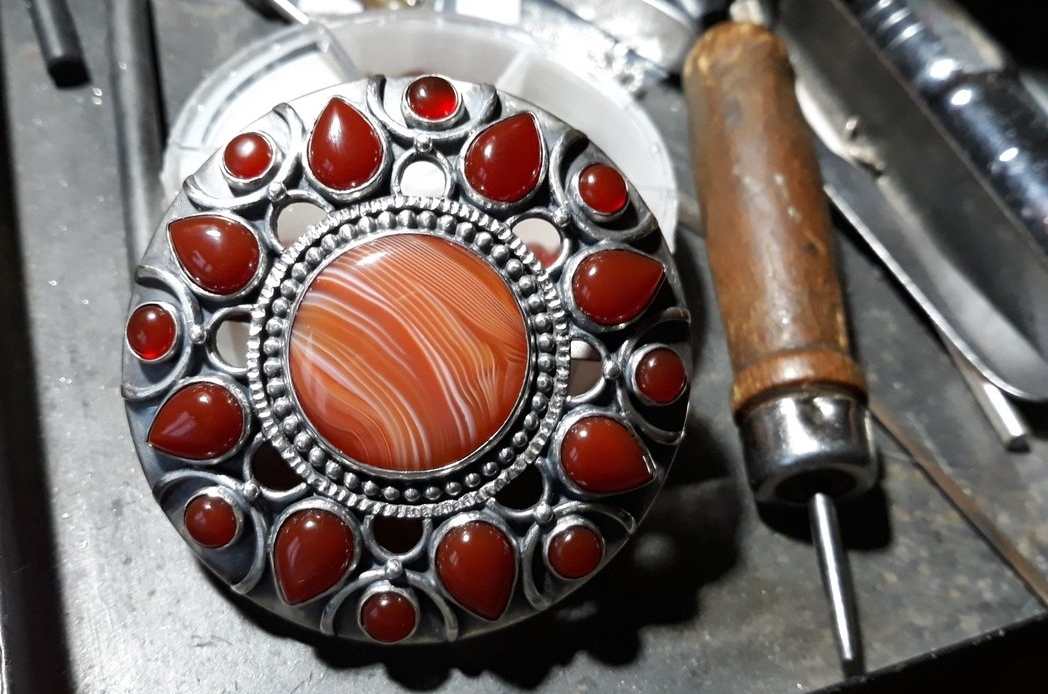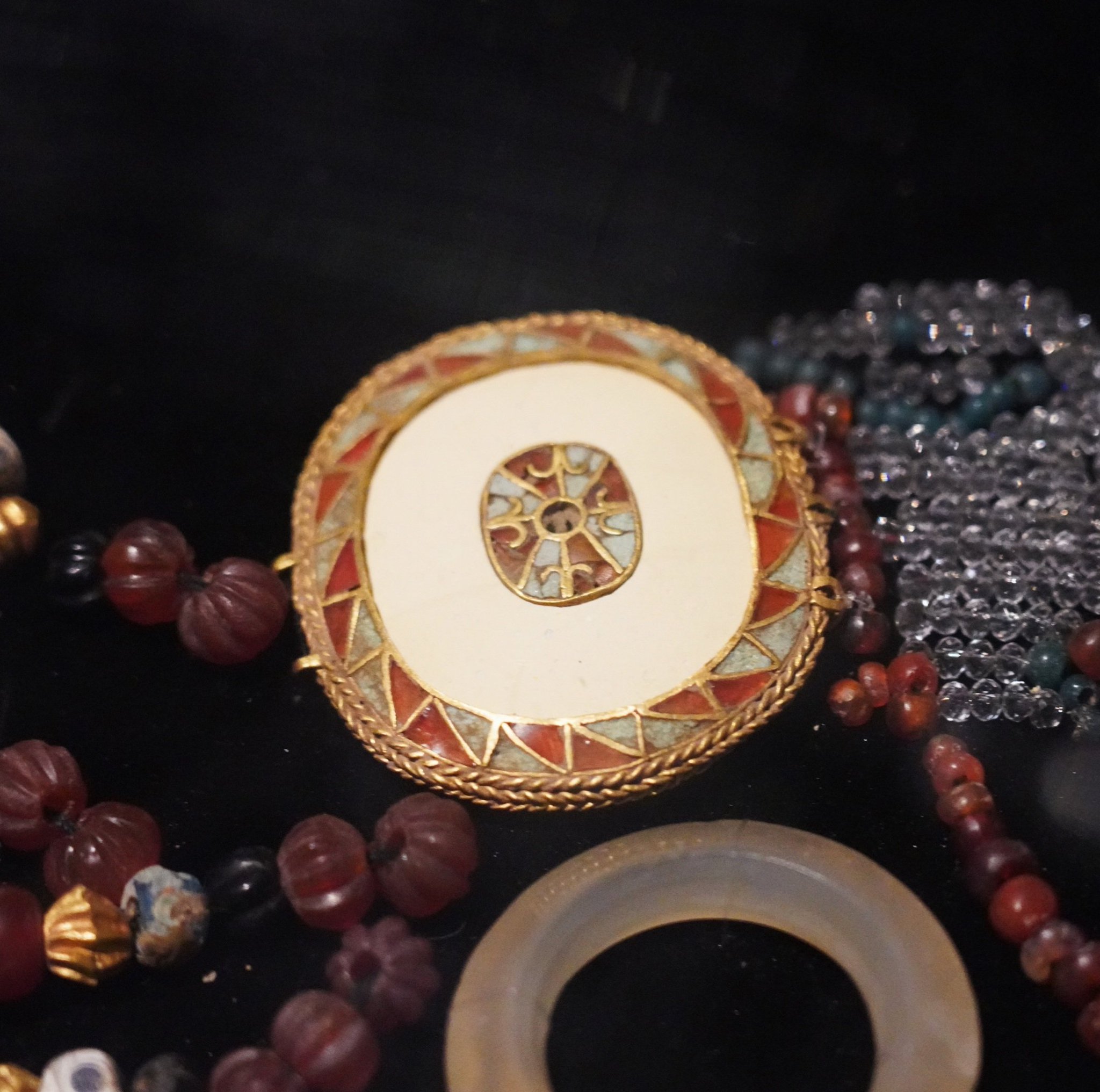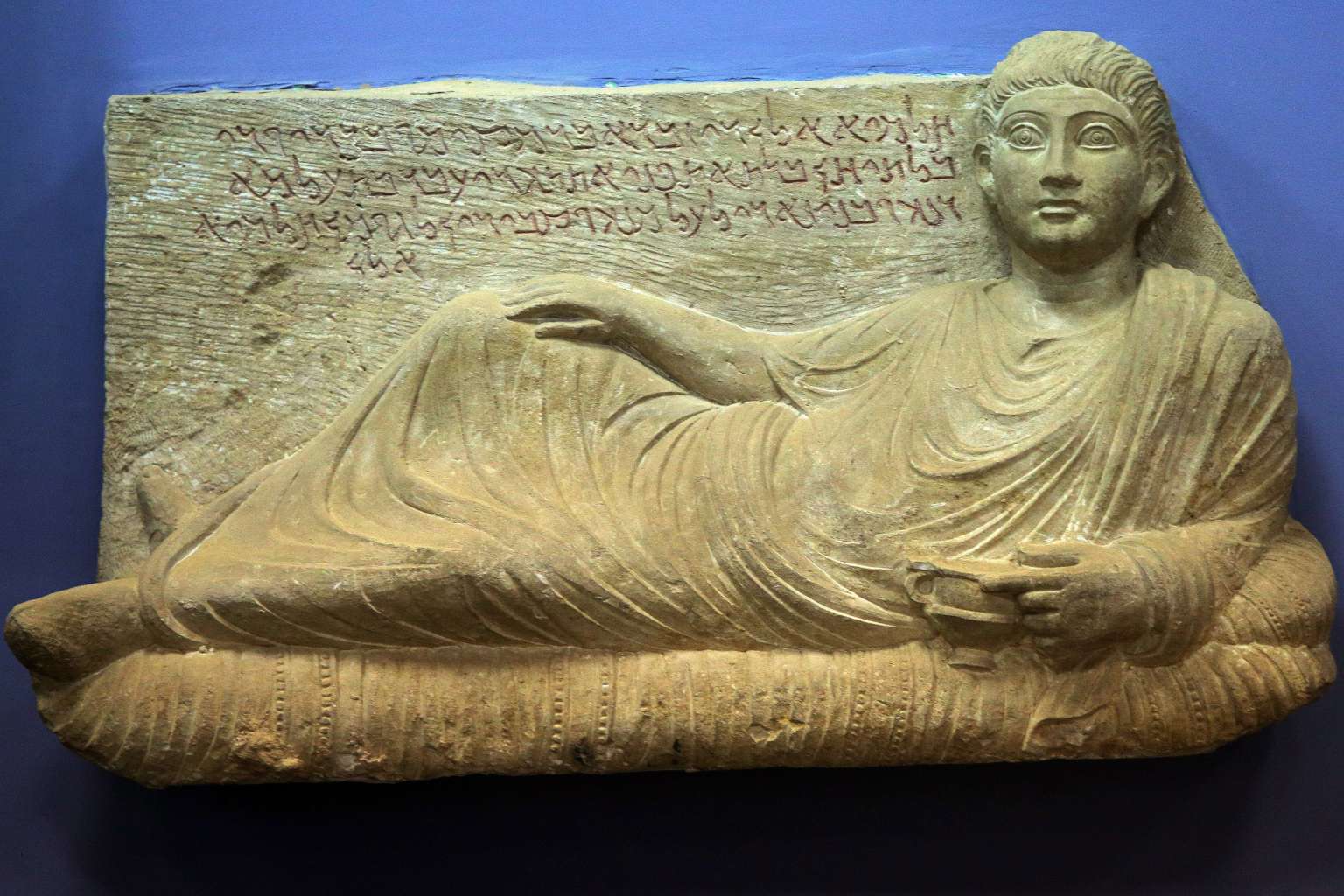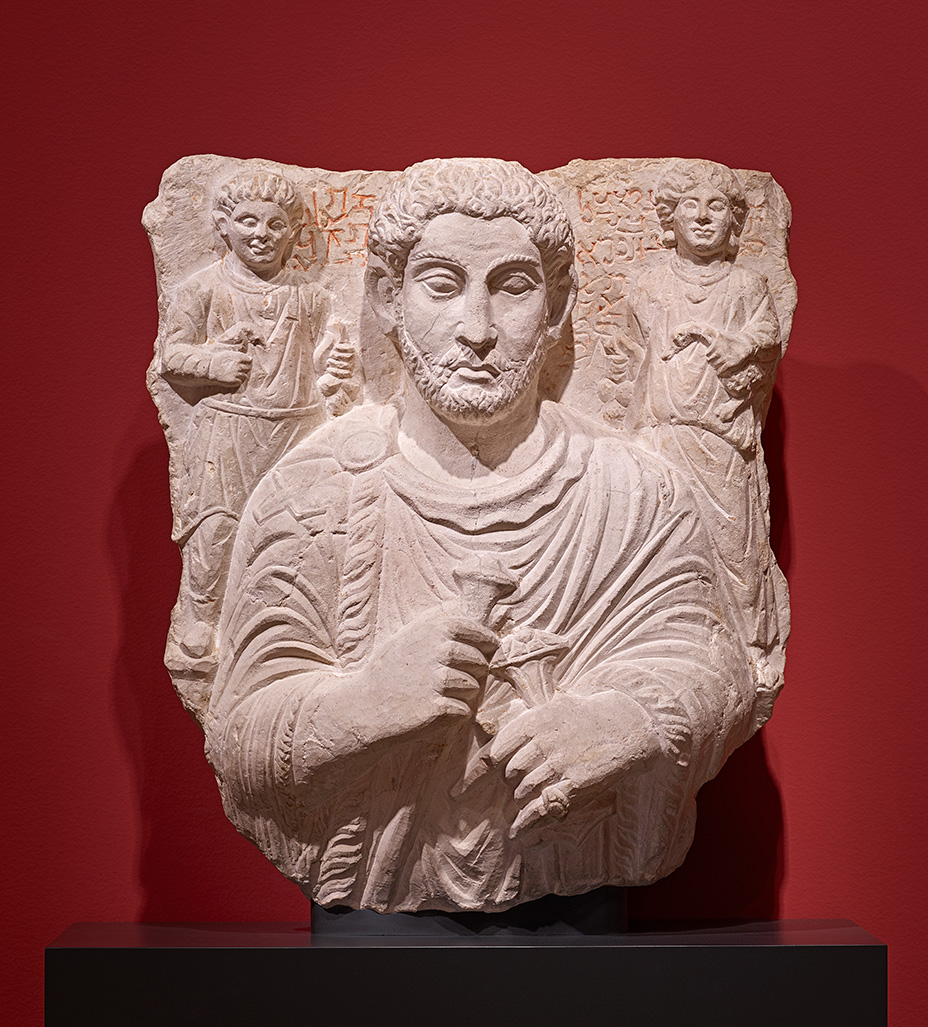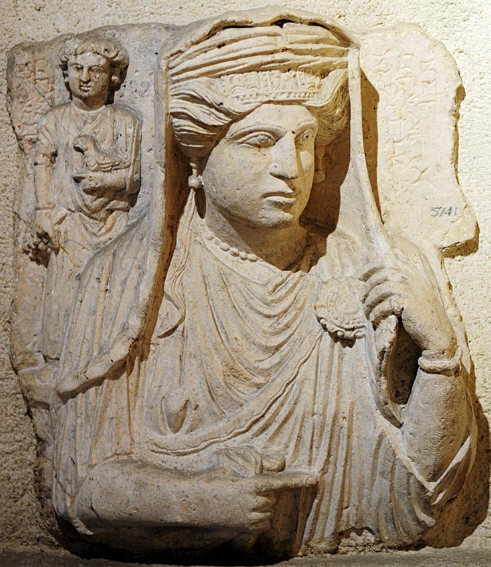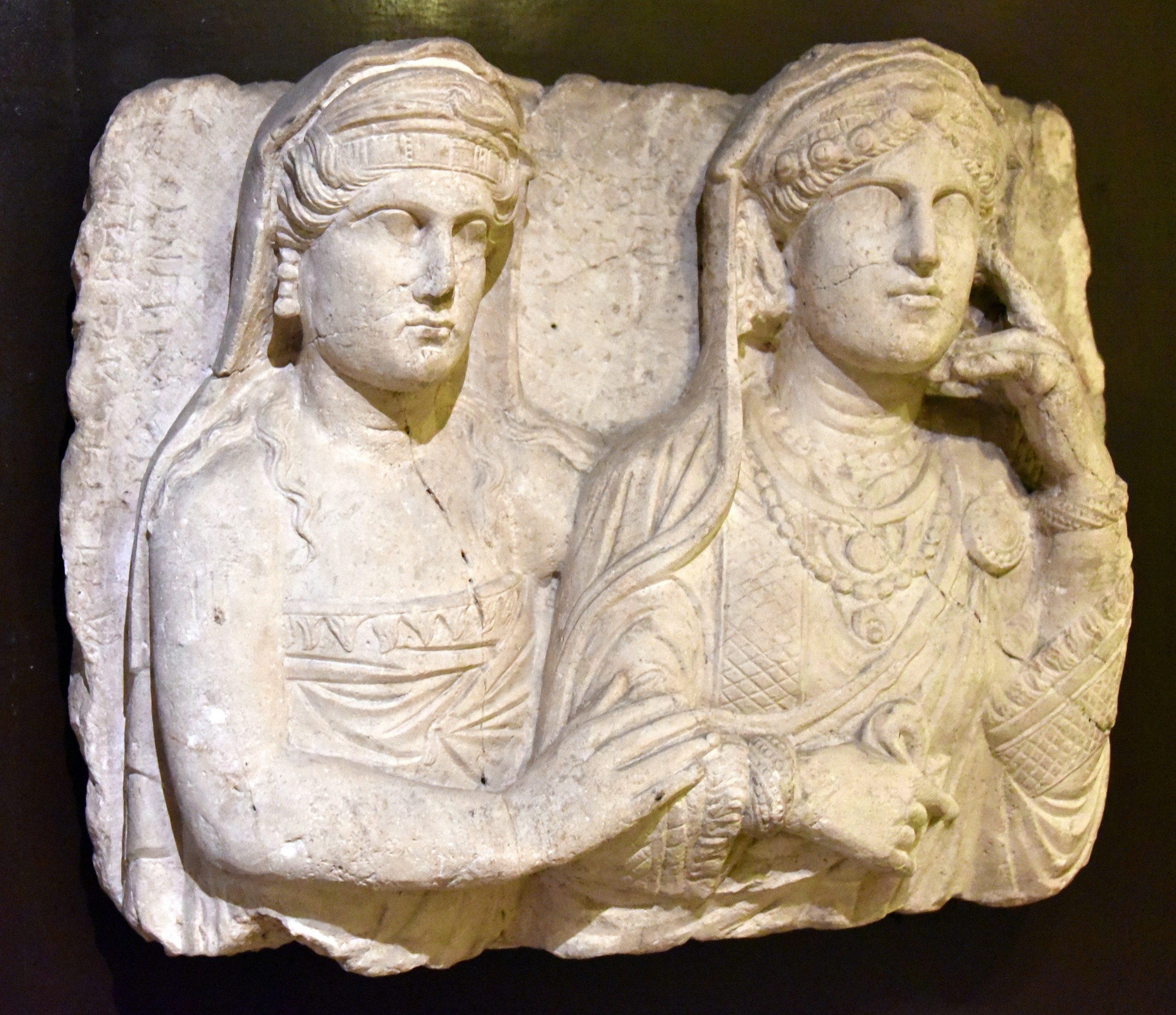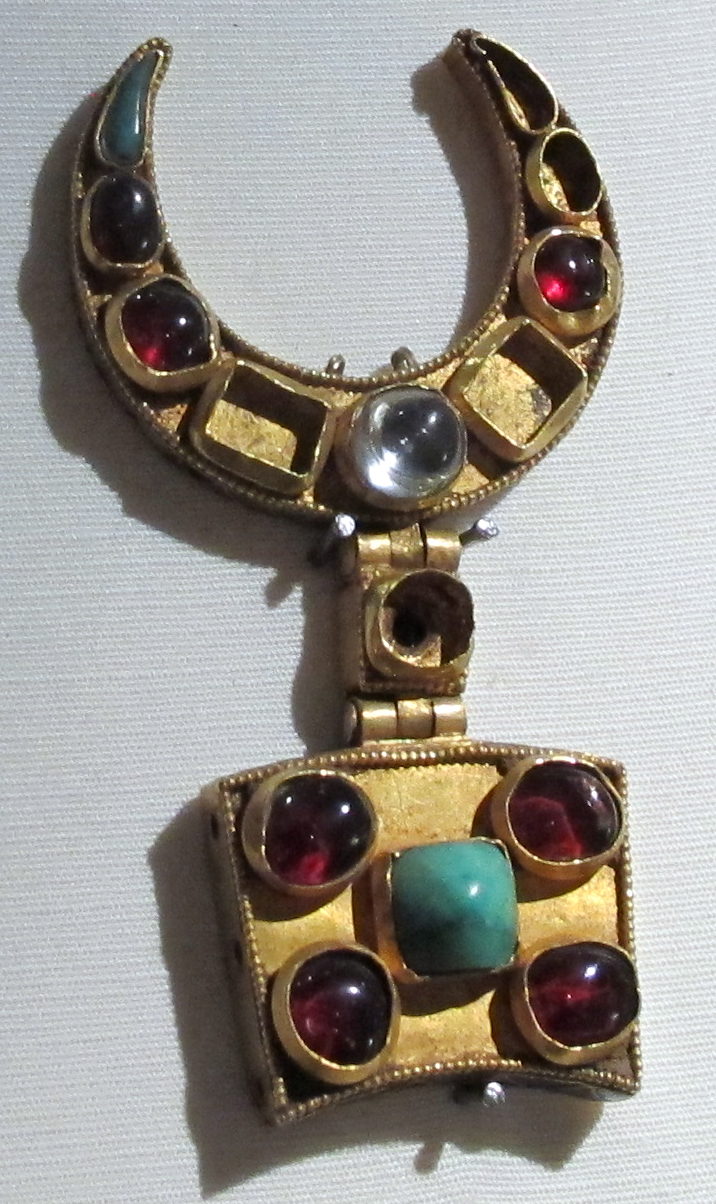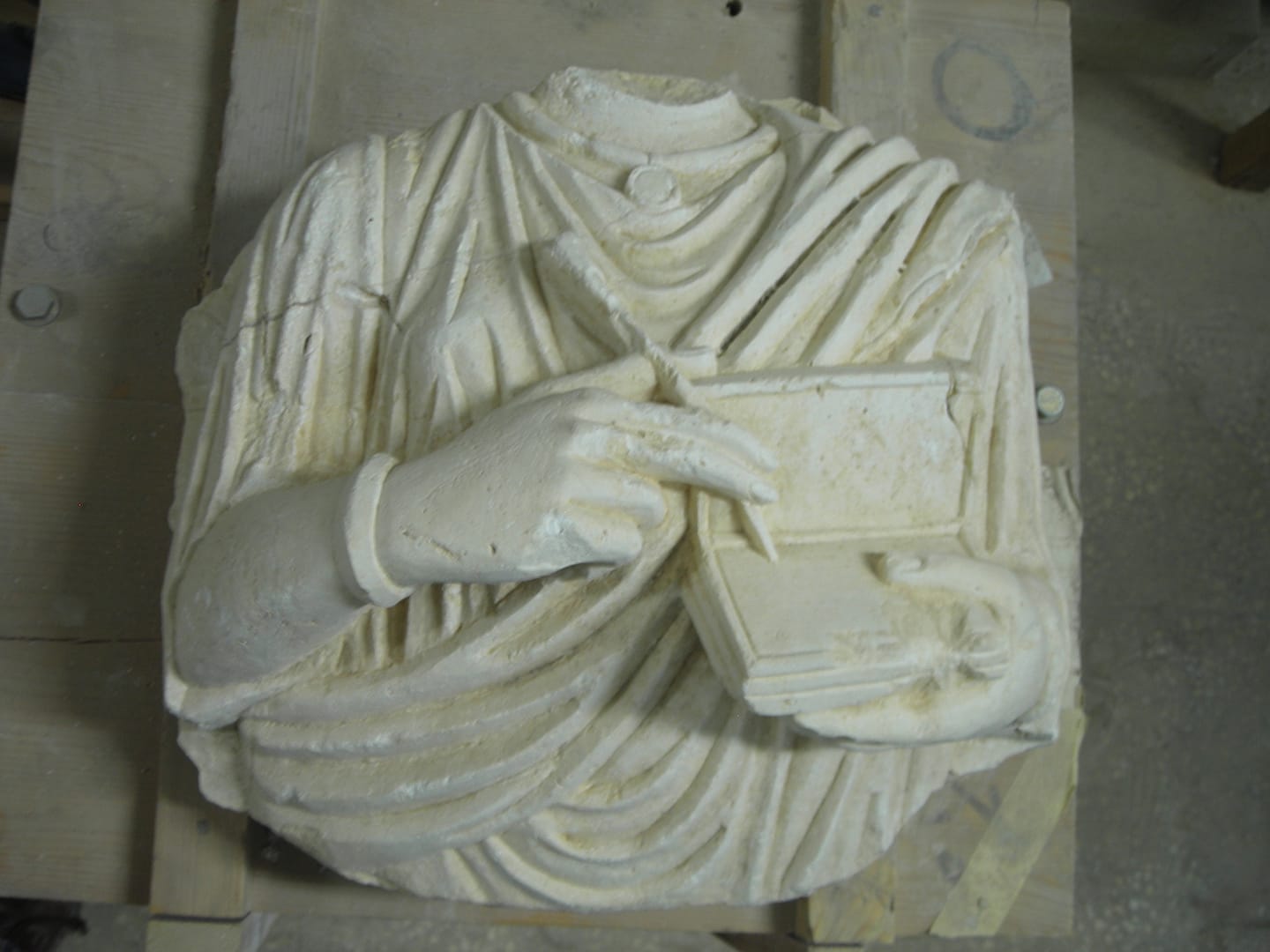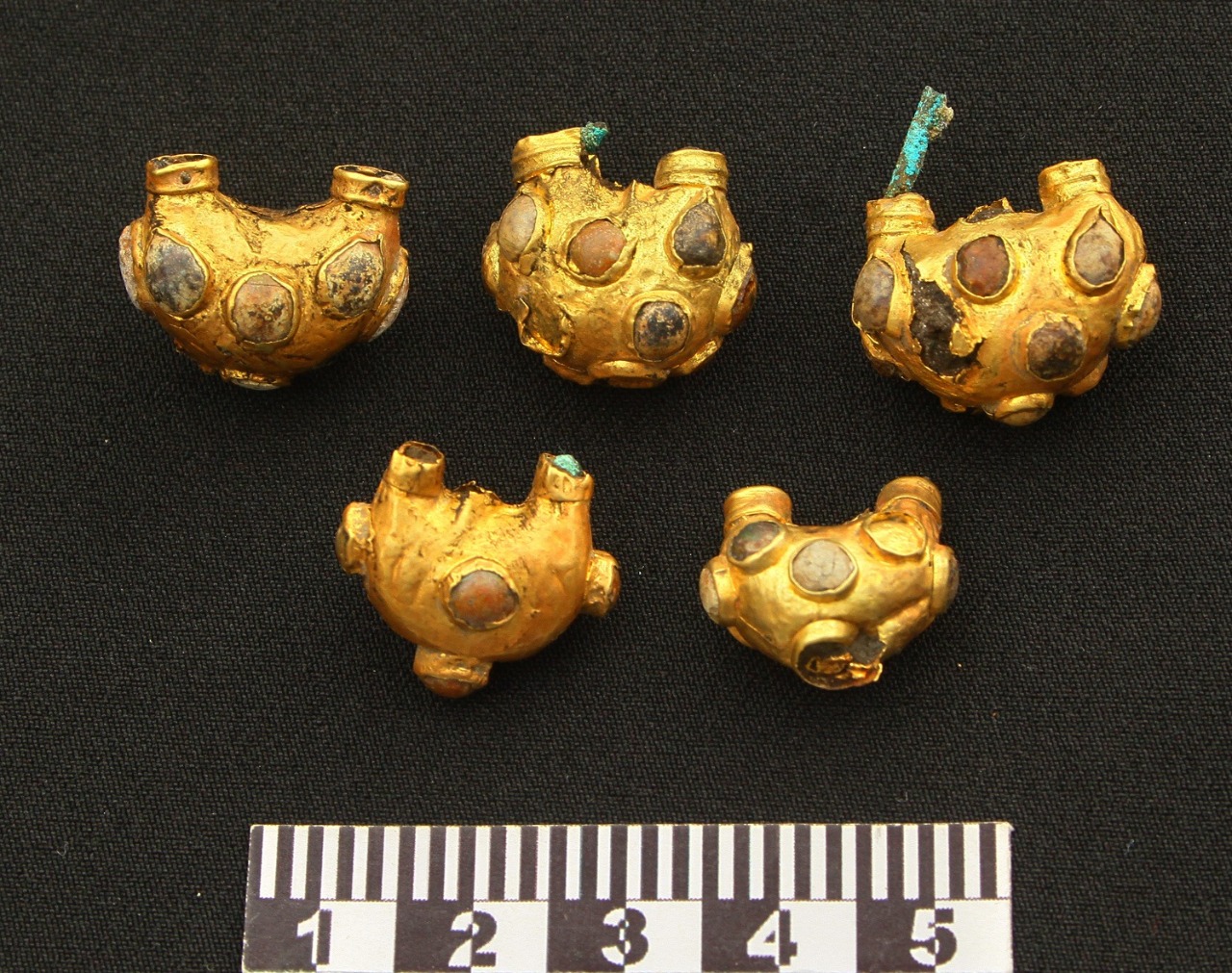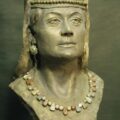
1st-2nd century
In 1956, in the Vekil Bazar area near the city of Mary in Turkmenistan, two steles were discovered that turned out to be Palmyrene reliefs of a middle-aged man in a Roman robe and a girl in a tunic with a bird in her left hand and a bunch of grapes in her right.
Both reliefs are inscribed: a girl is “Bayt, daughter of Hairan, [son] of Taimarku“, a man – “Mezabban, son of Borea, [son] of Nih”. Alas!”
Based on the inscriptions M.E. Masson, suggested that Taimarku could be identified with Taimarku from the Palmyra inscription of 193, a famous merchant and organizer of extremely successful caravans. Having learned of the death of his granddaughter in distant Merv, he ordered two reliefs to be made for the family tomb and the burial site itself. There is also an answer to the question of how the Syrian girl ended up in the Transcaspian region – there could have been a Palmyra trading post in Merv that allowed merchants to have representatives on the spot.

1st-2nd century
Literature
- М.Е. Массон. Две пальмирские скульптуры из мервского оазиса. Известия Академии Наук Туркменской ССР. Ашхабад, I, 1966, стр. 55-62
- Г.А. Кошеленко. Родина Парфян. М., 1977 http://www.sno.pro1.ru/lib/koshelenko_rodina_parfyan/koshelenko_rodina_parfyan.pdf
